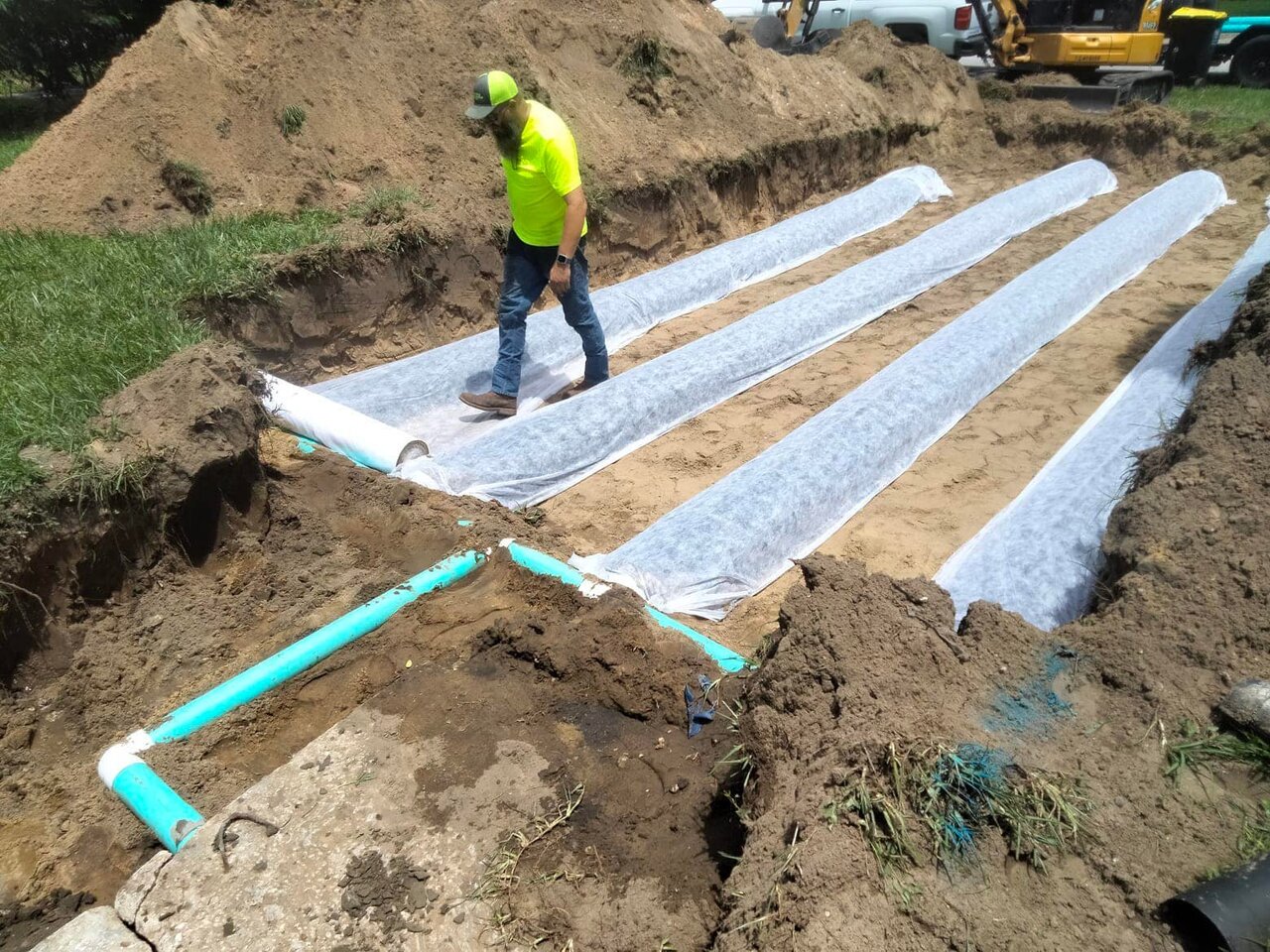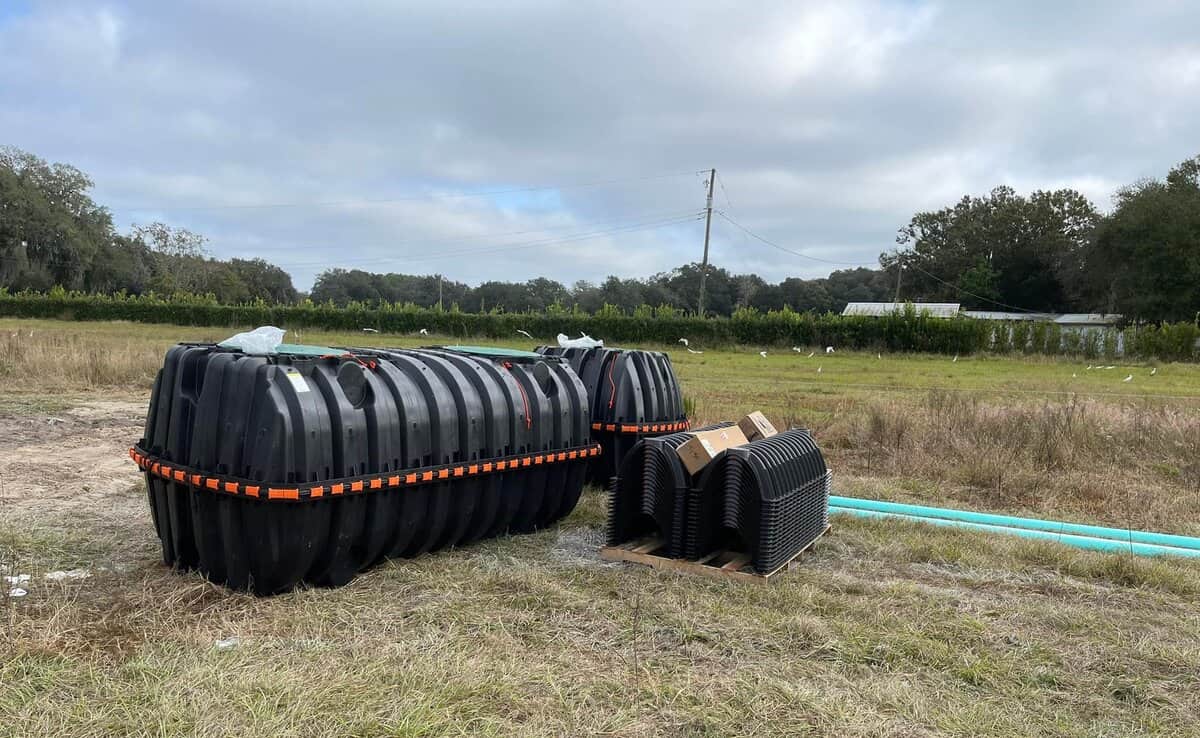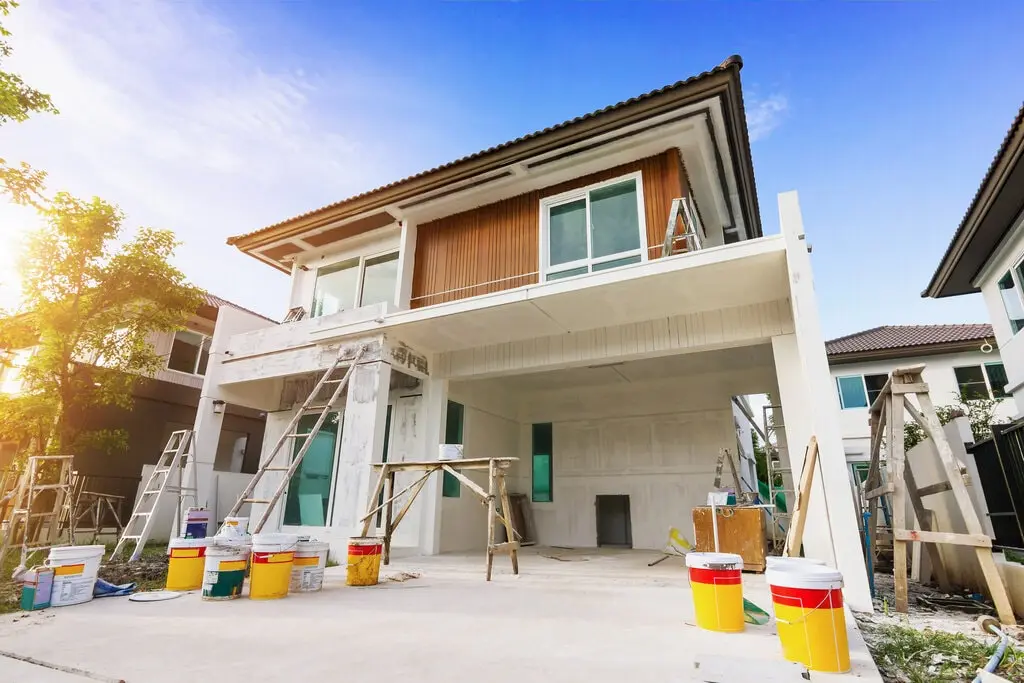Homeowners who live in areas where septic and sewage service is not available from a municipality may have a septic system to process wastewater on site instead. There are two main components of a typical septic system setup – a septic tank and a drainfield (also known as a leach field or soil absorption field).
Understanding Septic System Installation
Here is a basic overview of how a residential septic system works:
- Water from kitchens, bathrooms, and laundry rooms exits the home through one pipe going into the septic tank.
- In the septic tank, the solid material in the wastewater sinks to the bottom, forming sludge. Any oil and grease in the wastewater float to the top, creating a layer of scum. The middle layer is partly clarified water.
- In many septic systems, the liquid wastewater (without the solids, oil, and grease) exits into the drainfield, where it is filtered through the soil. Other types of septic systems utilize pumps or gravity to move the wastewater (known as effluent) though sand, organic matter, or other media to remove pollutants.
In a typical home, wastewater comes from kitchen sinks, dishwashers, toilets, bathroom sinks, tubs / showers, and clothes washers. All of this wastewater needs to flow through the septic system, an important fact to be aware of in order to minimize problems.
The Guadalupe-Blanco River Authority created a visual model for how a household septic system works if you would like more information.
Types of Septic Tanks
Septic tanks are buried underground, with pipes connecting them to the residence and to the drainage area. They are usually made of one of these materials:
Concrete septic tanks
These tanks are rustproof and extremely durable, typically lasting for 20 years or more. One drawback of concrete septic tanks is that they can be difficult to repair. Another potential issue is that they can let waste seep out and groundwater to seep in if a crack develops.
Fiberglass septic tanks
These are lighter than other types of tanks, making them easier to install. Their light weight comes with a drawback, though, since they are more likely to shift than other septic tank options.
Plastic septic tanks
They are light and relatively long lasting. They are rust proof and less likely to crack than concrete, and they are often one of the most affordable options. Like fiberglass septic tanks, though, their light weight can be a problem if they are not installed correctly.

Steel septic tanks
These are relatively less common for a residential septic installation because they typically start to rust by the time they reach 25 years of age. A rusted septic tank could collapse due to the weight of the ground above it, which makes it important for homeowners to have a licensed septic installer do periodic inspections.
Aerobic septic tanks
They are more expensive than other types of septic tanks, and they are often used after other types of tanks have failed. Aerobic septic tanks are powered by electricity, and can be both more effective and require smaller drainfields. In addition to the cost, a drawback for aerobic tanks is that they require more frequent maintenance. On the positive side, though, they can last for many years.
Septic Tank Installation
The process of installing a septic tank depends on whether the septic contractor will be installing a completely new septic system on the property or if they are replacing an existing septic tank.
Either way, septic tank installation is not a job that most homeowners are equipped to take on themselves. The process is difficult and complicated, and most homeowners simply do not have the knowledge or the equipment required. Septic system contractors have the experience necessary to ensure that your septic tank installation is done properly and safely from the outset.
Installing a septic tank is specific to each home and each homeowner. It is important to get the proper size tank to ensure that the system does not become overloaded. The process of installing a septic tank may include obtaining permits and approvals, completing a site survey, and doing soil tests. Excavation work will need to be done, and plumbing to connect the septic tank to both the home and the drainfield will be required. Some systems will require septic tank alarm installation or other special accommodating factors.

Understanding Your Septic System
Whether you are replacing a septic tank or you need a new septic system, understanding how your home’s wastewater is treated can ensure that your system continues to work effectively and that it lasts as long as possible. This can help protect the health of your family, avoid contamination of nearby groundwater, maintain the value of your property, and avoid costly septic repairs or fines.
Bacteria in your septic tank are an important part of maintaining its natural balance and how well it ultimately works. For that reason, it is important to consider the following:
- A septic system is designed for the size of the home and the family, and is meant to handle a certain amount of waste. Too much waste at once can overwhelm the bacteria.
- Frequent use of antibacterial soaps or strong cleaners can kill bacteria in the septic tank.
- Prescription or over the counter medications can harm bacteria.
Another important part of septic tank care is preventing clogs. The best way to do that is to avoid putting anything other than toilet paper and wastewater down the drain.
Septic Tank Installation in and Near Lakeland
At Septic and Drainfield Depot, we are experts in all aspects of septic systems, including septic tank installation, septic tank cleaning and pumping, septic system inspections, and lift stations for both homeowners and commercial property owners.
We know that your septic system is a vital component of your home, and we have highly trained experts who can diagnose problems and fix them right the first time. If you need septic system services in and near Lakeland, contact us today for a free estimate. For emergency septic system issues, our experts are available 24/7 to respond to your calls.







